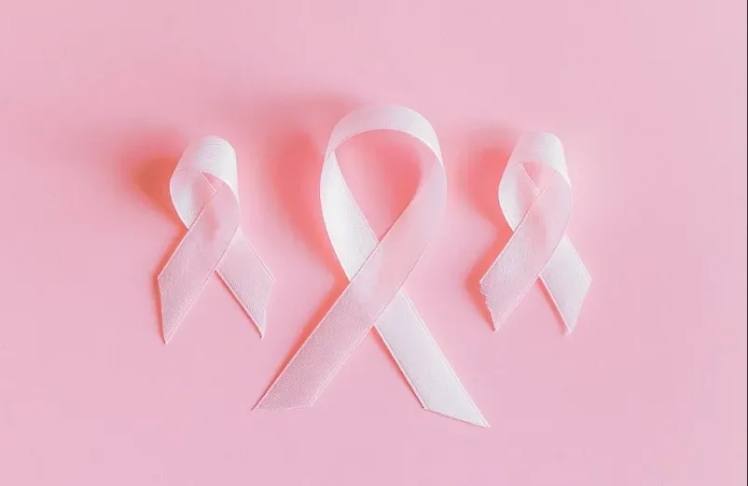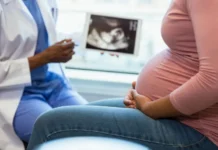
By Sherri Kolad, Michigan Chronicle
This post was originally published on Michigan Chronicle
Black women are twice as likely to be diagnosed with triple-negative breast cancer than White women, according to cancer.org.
They’re also 30% more likely to die from these cancerous tumors because of lower rates of surgery and chemotherapy.
During Breast Cancer Awareness Month, many messages surrounding prevention, early diagnosis, and treatment options are being heard loud and clear, along with addressing prevalent disparities.
The wide disparity in breast cancer death rates between Black and White women likely reflects fewer cancers being diagnosed at a localized (early) stage (57% in Black women compared with 67% in White women), as well as less access to high-quality treatment, according to the American Cancer Society.
Cancers diagnosed at a later, more advanced stage are typically more complicated to treat. Black women have a lower 5-year survival rate overall and for every stage of diagnosis. About 82% of Black women live at least 5 years after their initial breast cancer diagnosis, compared to 92% of White women.
Higher death rates from breast cancer among Black women are also likely related to:
- Higher prevalence of obesity and other health problems
- Higher incidence of triple-negative breast cancer, which is aggressive
Other figures are equally as troubling as breast cancer alone accounts for 30% of newly diagnosed invasive cancers in women. Together, the 3 most common types of cancer in a woman—breast, lung, and colorectal—account for 50% of all new cases in women.
An estimated 287,850 women will be diagnosed with invasive breast cancer in 2022. Incidence rates have increased slightly—by about 0.5% a year on average—since the mid-2000s. This may be due in part to increased obesity and women having fewer children or having their first child after age 30.
An estimated 12% of women who are screened for breast cancer have an abnormal mammogram, but only 4% of these women have cancer.
About 43,250 women will die from the disease in 2022. For women, the death rate declined 42% between 1989 and 2019.
Statistics also show that one in eight women will be diagnosed with breast cancer in her lifetime. In Michigan, 9,000 new cases of breast cancer were reported in 2019 with 45 percent of those women residing in Metro Detroit.
“Breast cancer is the second most common cause of cancer deaths for African American women,” Melanie Williams-Bowers, a spokesperson for Susan G. Komen Foundation says.
“Younger Black women seem like they’re getting more aggressive types of breast cancer. It seems to be more invasive,” Williams-Bowers explains.
Historically, doctors have urged women to begin screening for breast cancer at age 40, but with cases reported before age 40, many are requesting mammography earlier.
“We as Black women have to fight and tell our doctors we want mammography and screenings sooner because it has no age,” Williams-Bowers urges.
Despite starting facts and figures, breast cancer is treatable and preventable, and the Detroit Medical Center (DMC) offers tips on how to get a handle on it.
“The best treatment is prevention, which is why it is so important to be screened per your physician’s recommendations. Diagnosing breast cancer early increases the likelihood that your cancer will be treatable,” according to the DMC.
Breast Cancer Screening
Breast cancer screening means checking the breasts for cancer before there are signs or symptoms of it. There are three main ways to screen for breast cancer: clinical breast exam, mammography, and MRI.
- Clinical breast exam – A clinical breast exam is an examination by a health care provider, who uses his or her hands to feel for lumps or other changes in the breast or underarm.
- Mammogram – A mammogram is a low-dose X-ray of the breast. Health care providers use a mammogram to look for early signs of breast cancer. Regular mammograms are the best test health care providers have to find breast cancer early.
- MRI – If you have a family history or genetic tendency for breast cancer your doctor may recommend you get an MRI to screen for breast cancer in addition to mammograms.
Expert opinions vary about when and how often a woman should have breast cancer screening. The American Cancer Society guidelines call for:
- Yearly mammograms starting at age 40
- Clinical breast exam about every 3 years for women in their 20s and 30s and every year for women 40 and over
Home Screening Exam
A breast self-exam is when a woman checks her breasts for lumps, changes in size or shape of the breast, or any other changes in the breasts or underarm. Breast self-exams do not replace regular screening mammograms. If you do breast self-exams, it is important to remember that breast changes can occur because of pregnancy, aging, menopause, taking birth control pills or other hormones, and during menstrual cycles. It is normal for breasts to feel a little lumpy and uneven. It is also common for breasts to be swollen and tender right before or during a menstrual period.
A proclamation on National Breast Cancer Awareness Month from President Joe Biden included a rededication of his administration to supporting patients and their families, boosting access to care, and raising awareness about the life-saving importance of early screening.
“We honor all those we have lost to this terrible disease and celebrate the courageous survivors and advocates fighting to beat it, along with the loved ones and medical providers who have their backs every day,” Biden said in his proclamation, adding that transformative medical breakthroughs have already been made. “Groundbreaking immunotherapies and other new treatments have changed the prognosis for so many, and early detection is our most important tool. … As so many families know too well, cancer can rip lives apart forever. Beating it is one of the biggest things we can do — as individuals and together as a nation.”















